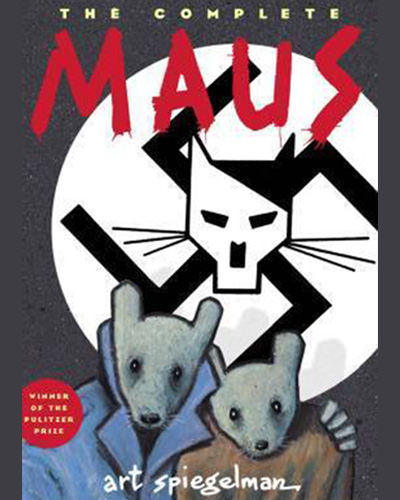
| Language | From $0.00 |
| Release Date | January 1, 1980 |
| Genre | Graphic Novels |
| Author | Art Spiegelman |
| File Size | Penguin Books |
| Rating | (4.57) |
The Complete Maus is a two-part graphic novel that chronicles the life of Vladek Spiegelman, a Polish Jew who survived the Holocaust, and his son Art, who is trying to come to terms with his father’s experiences. The story switches between the past, where Vladek recounts his harrowing experiences during the Holocaust, and the present, where Art interviews his father and deals with his own feelings of guilt and inadequacy.
The main characters in The Complete Maus are Vladek, a resourceful and resilient survivor, Art, a guilt-ridden and conflicted son, and Anja, Vladek’s wife and Art’s mother, who also survived the Holocaust but committed suicide later in life. The book also introduces several secondary characters, such as Mala, Vladek’s second wife, and other Holocaust survivors.
Spiegelman uses anthropomorphic animals to represent different groups of people in the book. Jews are depicted as mice, Germans as cats, and Poles as pigs. This distinctive art style adds a layer of symbolism and allegory to the story, making it even more powerful and thought-provoking.
The Complete Maus is a harrowing account of the Holocaust and the struggle for survival faced by Vladek and other Jews during this dark period in history. The book highlights the atrocities committed by the Nazis and the resilience of the human spirit in the face of unimaginable horrors.
Guilt is a recurring theme in The Complete Maus. Both Vladek and Art grapple with feelings of guilt throughout the book – Vladek for surviving the Holocaust when so many others perished, and Art for not fully understanding or appreciating his father’s experiences. Memory also plays a significant role, as Vladek’s memories are both a source of pain and a testament to his survival.
The relationship between Vladek and Art is complex and central to the story. Through their conversations, the reader gains insight into the generational gap between Holocaust survivors and their children, as well as the difficulties in truly understanding the experiences of others.
Masks are a recurring symbol in The Complete Maus, representing both the literal masks worn by the characters as animals and the metaphorical masks they wear to hide their true selves. This theme ties into the larger ideas of identity and self-presentation.
The Complete Maus has won numerous awards and accolades, including the prestigious Pulitzer Prize in 1992. It is widely regarded as a seminal work in the graphic novel genre.
The book has been praised for its powerful storytelling, unique art style, and exploration of complex themes. However, it has also faced controversy and criticism for its portrayal of Poles as pigs and its use of animal metaphors to depict different groups of people.
As a reviewer, I found The Complete Maus to be a profoundly moving and thought-provoking work that sheds light on a dark chapter in human history. The book’s art style and storytelling techniques make it a unique and impactful reading experience.
The Complete Maus is a must-read for those interested in Holocaust literature, graphic novels, or works that explore themes of survival, guilt, and memory. It is a powerful and unforgettable book that will leave a lasting impression on readers.